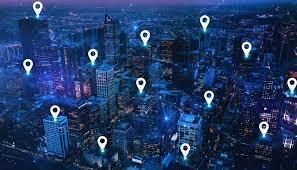Location Analytics: Driving Smarter Business Decisions through Geospatial Insights

Location analytics has become a vital tool for businesses, governments, and organizations looking to extract deeper value from geographic and spatial data. By combining traditional data analytics with geospatial information, location analytics allows decision-makers to understand the "where" behind their operations. This approach is transforming industries by enabling better planning, enhanced customer engagement, and optimized operations. As businesses increasingly rely on data-driven strategies, location analytics stands out as a critical technology that bridges data and geography to provide actionable insights.
At its core, location analytics leverages data that includes geographic components such as addresses, GPS coordinates, or mapping information. This data is then analyzed with visualization tools like Geographic Information Systems (GIS), heat maps, or spatial dashboards. The result is a clear understanding of how location impacts performance, whether it is identifying high-demand areas for retail expansion, tracking supply chain routes, or mapping customer demographics. The ability to visualize data geographically provides organizations with insights that are often missed through traditional tabular data analysis.
The applications of location analytics are widespread across multiple industries. In retail, businesses use it to identify the best store locations, analyze foot traffic patterns, and target customers with location-based marketing campaigns. In transportation and logistics, companies employ it to optimize delivery routes, reduce costs, and improve efficiency. Governments and smart city initiatives rely on location analytics for urban planning, infrastructure development, and emergency response management. In healthcare, hospitals use spatial insights to determine optimal locations for new facilities or to monitor disease spread across regions. This broad applicability makes location analytics a powerful enabler of innovation and efficiency.
One of the most significant advantages of location analytics is its role in improving customer experiences. By integrating geospatial insights with customer data, businesses can offer personalized services based on where their customers are located. For example, banks can use location analytics to determine where to place ATMs for maximum accessibility, while telecom providers can analyze network performance by geography to enhance coverage in underserved areas. This location-driven personalization not only boosts customer satisfaction but also creates new revenue opportunities.
The rise of advanced technologies such as artificial intelligence (AI), big data, and the Internet of Things (IoT) is further strengthening the capabilities of location analytics. Real-time data collected from IoT sensors, GPS devices, and mobile apps can now be analyzed instantly to provide live insights into traffic patterns, environmental changes, or consumer movements. This real-time intelligence helps organizations make quick, informed decisions and adapt dynamically to changing conditions.
Source - https://www.marketresearchfuture.com/reports/location-analytics-market-2759
Looking ahead, location analytics will continue to grow in importance as organizations seek to become more data-driven and customer-centric. With industries becoming increasingly digital and interconnected, the ability to harness the power of place-based insights will be a key differentiator in competitive markets. Businesses that invest in location analytics can expect to enhance operational efficiency, create more personalized customer experiences, and achieve stronger strategic planning outcomes. In an era where "location is everything," location analytics stands as a cornerstone of smarter decision-making.
- Art
- Causes
- Crafts
- Dance
- Drinks
- Film
- Fitness
- Food
- Games
- Gardening
- Health
- Home
- Literature
- Music
- Networking
- Other
- Party
- Religion
- Shopping
- Sports
- Theater
- Wellness



